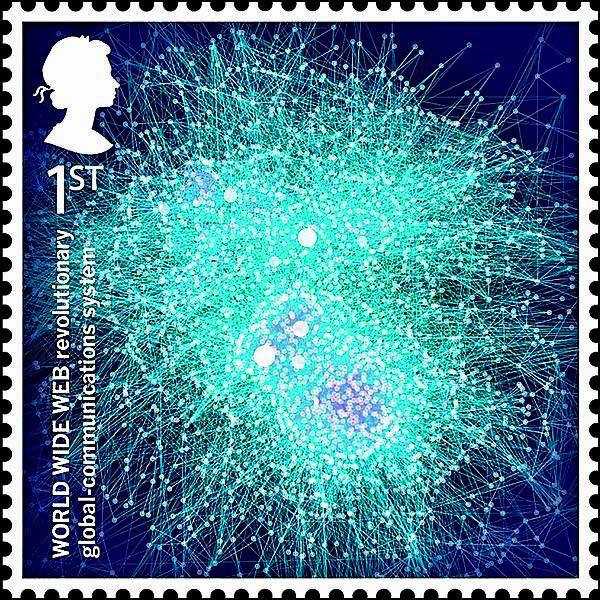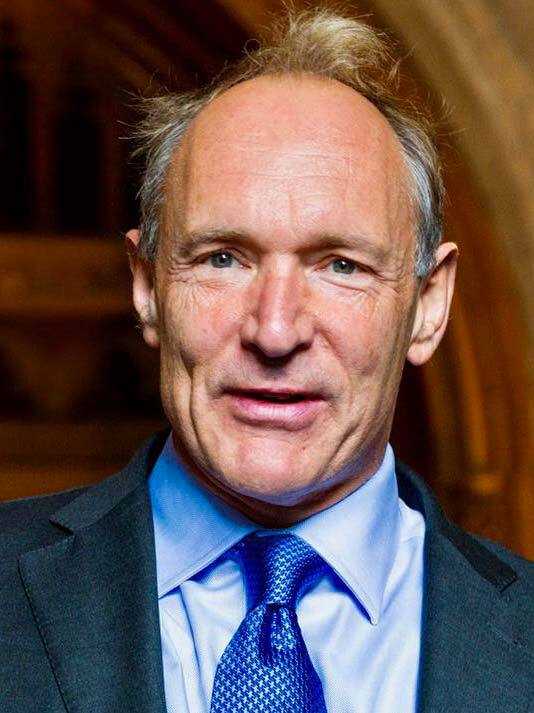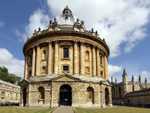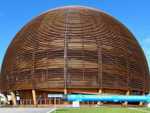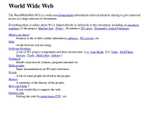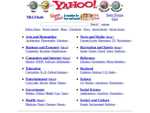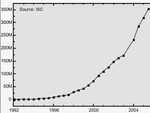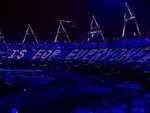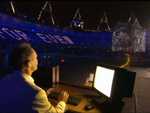1. Early Life
Born in 1955 in south-west London, Tim Berners-Lee was one of four children born to Conway Berners-Lee and Mary Lee Woods.
His childhood was spent train-spotting, playing with model railways (thereby teaching himself electronics), and learning about computers (his parents worked on the Ferranti Mark 1, the first commercial computer).
In short, he way always a bit of a geek!
In 1976, Berners-Lee took a first class degree in physics from Queen’s College, Oxford.
Interesting fact ...
Tim BL's time at Oxford University was not without incident: he got caught hacking and was banned from using the university's computers! His response was to build his own computer using an old tv, a Motorola microprocessor and a soldering iron.
Berners-Lee’s first job was as an engineer at a telecoms company in Poole. Two years later, he moved to a job where he helped to create printer software.
ENQUIRE
By 1980, Berners-Lee was working as an independent contractor for CERN (the European organisation for nuclear research).
He had the germ of his idea for the internet later that year, suggesting a hypertext concept and building a prototype system called ENQUIRE. His proposal was desperately needed: at the time CERN had about 10,000 employees, and no hardware and software standardisation.
Interesting fact ...
Berners-Lee got the name ENQUIRE from a Victorian book found in his parents' house. The full title was "Enquire Within Upon Everything"; it contained a miscellany of advice, including how to remove clothing stains and tips on investing money!
Berners-Lee left CERN after six months. He gave the 8-inch floppy disc that stored his ENQUIRE program to a systems manager, who gave it to a student, who lost it!
Tim BL went to Bournemouth to work in computer networking, for a friend called John Poole who was trying to upgrade the boring dot-matrix printer so that it could produce fancy graphics. This gave him experience that was critical in his later creation. By late 1984, Berners-Lee had returned to CERN as a fellow.
Poole gave Berners-Lee a Compaq 'portable' computer on his departure; but it wasn't a laptop as we know it today. Berners-Lee describes it as being more like a sewing-machine that had to be lugged around.
2. The World Wide Web
In 1989, Berners-Lee returned to his vision for a world wide web.
Much of the technology was already there: hypertext language (the code that is read by web browsers) had been invented and companies used their own networks.
But Berners-Lee, who has described the situation in CERN as “desperate” (proving again that necessity is the mother of invention), married the technology together.
As he has said, he conceptualised
"all of the documentation systems out there as being possibly part of a larger imaginary documentation system".
"Vague, but exciting"
Berners-Lee's friend and supervisor Mike Sendall (1939-1999) described his idea as “vague, but exciting”. So the challenge for Tim BL was to turn it into reality.
He did this by designing:
- the first web browser (the precursor of the application, such as Google Chrome, on which you are reading this page) and
- the first web server (the machine that provides this page to the computer that you are reading it on).
The first web page
The first webpage was published on 6 August 1991. It had a somewhat clunky web address, http://info.cern.ch/hypertext/WWW/TheProject.html, and explained what the world wide web was and how anyone could use a web browser and establish a web server.
The url is still live: why don't you check it out to see how far the internet has come? As you'll see, the first two lines were not particularly exciting! They stated:
"The WorldWideWeb (W3) is a wide-area hypermedia information retrieval initiative aiming to give universal access to a large universe of documents. Everything there is online about W3 is linked directly or indirectly to this document, including an executive summary of the project, Mailing lists, Policy, November's W3 news, Frequently Asked Questions."
What came next?
But the web was initially only one page wide. And there was lots of refining to do. Berners-Lee spent the next three years working on the design of the web and taking on board feedback from users.
Interesting fact ...
In about 1992, when Tim BL left CERN for his Christmas holidays, he was keen to ensure that his web server would keep working. He therefore plugged it into CERN's supposedly uninterruptible power supply. Things did not go to plan: the whole of CERN was powered down for the holidays!
It was over this period that he made specifications for
- URLs (uniform resource locations, that allow web pages to link to each other),
- HTTP (hypertext transfer protocol, the technology that allows web pages to be downloaded from other computers) and
- HTML (hypertext mark-up language, the code that is read and displayed by web browsers).
3. W3C (the World Wide Web Consortium)
By 1994, the growth of the internet meant that more co-ordination was needed to improve web standards.
A global phenomenon
Berners-Lee always said that the internet had to pass a “critical threshold”, so that its usefulness would “in turn encourage its increased use”. Statistics are not available for the earliest years of the internet. But it is known that, by December 1995, it had 16 million users (or 0.4% of the world’s population).
Interesting fact ...
By the millennium the number of web users had increased to 248 million (or 4.1% of the world’s population). The staggering growth continued. The end of 2005 saw a billion worldwide users (about 15% of the people on the planet), the end of 2010 saw about 2 billion users (30%) and the current figure is 4.177 billion (or 60% of the people on the planet).
The expansion of the web can be seen in other ways. In 1993, there were about 620 websites. By 1998 Google had indexed 20 million webpages. As of March 2019, there are an astonishing 1.67 billion websites. Source: www.internetlivestats.com
What percentage of adults use the internet?
In developed countries, the percentage of the population using the internet regularly exceeds 80%. The UK, for example, has 90% usage rate for adults. Amongst those aged 16-44, the UK Office for National Statistics reports that 99% have used the internet in the last three months.
W3C
In October 1994, Berners-Lee established the World Wide Web Consortium (W3C), whose mission is to develop protocols and standards to ensure the internet’s long-term growth . The initial home for W3C was the Laboratory of Computer Science at the Massachusetts Institute of Technology.
W3C’s mission is important:
"I want this webpage to display in more or less the same way whenever it is loaded, regardless of what computer it is loaded on, what browser it is loaded with, and where in the world it is loaded. And I want the download to be fast and glitch-free."
This is what W3C tries to ensure. These days it has 476 member organisations and 62 full-time staff.
Other projects
Berners-Lee continues to work with the development of the internet, including helping the British government establish its data.gov.uk website, founding the Web Science Trust, and acting as a director of the World Wide Web Foundation.
He regularly speaks in support of the importance of uncensored access to the internet.
Most recently, Berners-Lee has been working on a project at MIT called 'Solid'. Run through a for-profit company called Inrupt, it seeks to give people complete control over their digital data.
The Web's 30th Anniversary
In March 2019, Berners-Lee publicised the 30th anniversary of his original proposal for the world wide web by writing an open letter. It starts by noting that
"The web has become a public square, a library, a doctor’s office, a shop, a school, a design studio, an office, a cinema, a bank, and so much more."
But it goes on to cast a more downbeat message and to ask governments and companies to sign up to the Web Foundation's Contract for the Web.
The sources of Berners-Lee's concerns are three-fold: (i) state-sponsored hacking and attacks, criminal behaviour and online harassment; (ii) systems where user-value is sacrificed (such as spammy websites full of advertisements and the viral spread of misinformation); and (iii) the polarised and outraged quality of much online content and debate.
4. Awards and legacy
Berners-Lee has, unsurprisingly, picked up a number of awards over the past two decades.
Here's a summary of some of the most prestigious of them:
- Time Magazine named him one of the 100 most important people of the 20th century in late 1999;
- he has been elected a Fellow of the American Academy of Arts and Sciences;
- he was knighted for services to the global development of the internet in June 2004;
- he was voted the greatest living genius and awarded the Order of Merit by the Queen in 2007; and
- he has received numerous honorary degrees (including from Yale, Harvard, Madrid, St Andrews and Manchester).
Interesting fact ...
In his book Weaving the Web, Berners-Lee compared the effort needed to launch the web with a bobsleigh race: everyone had to push hard for a seemingly long time, but once the bobsleigh built up momentum everyone could get on board and enjoy the ride.
Most important invention since ...
In terms of impact, the internet is probably the most important invention since Victorian times, and the most significant advance in communication since the invention of the printing press (ahead of Marconi's radio and Bell's telephone).
Ian Goldin, Professor of Globalisation and Development at Oxford University, has said
"The web has been a huge net benefit for humanity. It has been as revoluntionary as the Gutenberg press in transforming the way in which ideas are shaped and shared."
The 2012 Olympic Games
Tim Berners-Lee also had a starring role in the opening ceremony of the 2012 Summer Olympic Games in London. He was unveiled to the crowd sitting behind a 1990s computer (a NeXT Cube), sending a tweet. It said: "this is for everyone".
He later commented
"The values and achievements of the Olympics will be amplified by the World Wide Web. It will be like millions of digital torches carrying the spirit of the Games to every corner of the world,"
NTF controversy
In July 2021, Berners-Lee courted controversy when he sold 10,000 lines of source code that allowed him to display an HTML document.
The $5.4 million raised by the Sotheby's auction will be donated to causes supported by Berners-Lee and his wife. But the sale caused controversy because the source code and other digital assets were sold as NTFs (Non-Fungible Tokens), which are based on environmentally unfriendly blockchain technology.
Berners-Lee disagreed, saying:
“This is totally aligned with the values of the web ... I’m selling a picture that I made, with a Python programme that I wrote myself, of what the source code would look like if it was stuck on the wall and signed by me.”
Other Tim BL facts
Berners-Lee is also known as Tim BL.
He has a string of letters that he can write after his name: OM (Order of Merit), KBE (Knight Commander of the British Empire), FRS (Fellow of the Royal Society), FREng (Fellowship of the Royal Academy of Engineering), FRSA (Fellowship of the Royal Society of Arts), DFBCS (Distinguished Fellow of the British Computer Society)!
Berners-Lee is a self-confessed geek. He is also remarkable for the fact that he did not try to make any money out of his great invention (he could have made billions). As he has said:
'if you love something, you set it free'.
Tim is married to Rosemary Leith and has two children.


